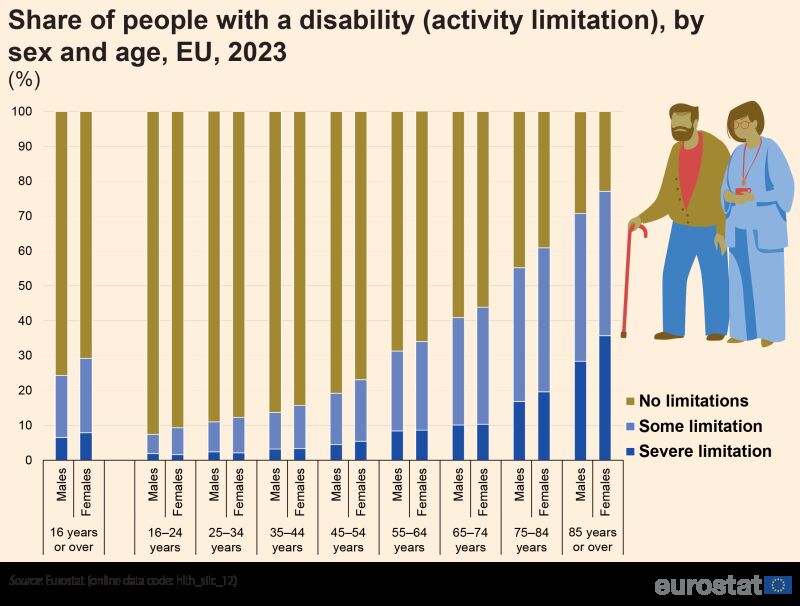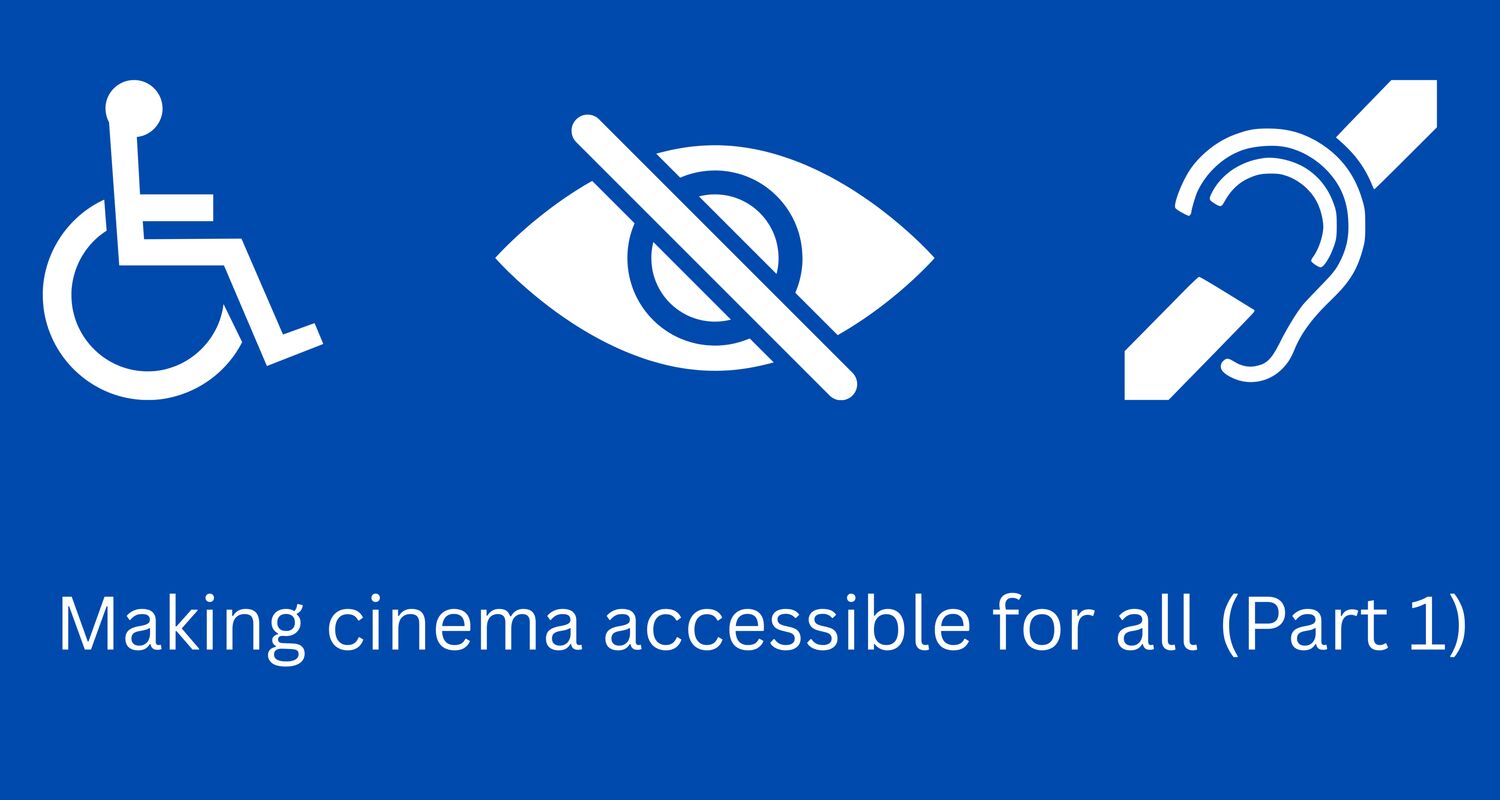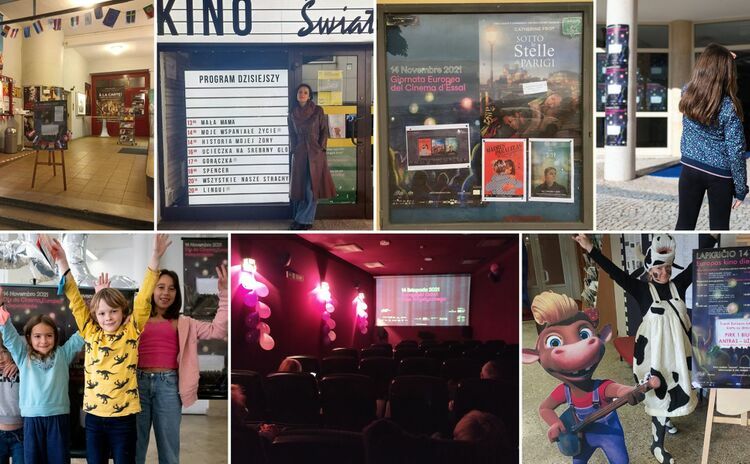Making cinema accessible for all (Part 1)
Over a quarter of the EU population aged 16 and above identify as having some form of disability. That is more than one in four citizens across Europe whose access to culture, including cinema, is often limited by barriers that could be avoided. There is an undeniable ethical and rights-based imperative to remove these barriers, but there is also an opportunity for audience growth which we, as an industry, simply cannot ignore.
A 2025 study by the Inevitable Foundation surveyed over one hundred disabled cinema-goers in the US. The report highlighted that 65% of respondents would rather watch a film in a cinema than at home. But it also revealed that, for 42% of them, accessible seating was not available to them during their visits. 68% had been in cinemas without accessible restrooms. A similar initiative from the French National Cinema Centre CNC highlighted that 24.5% of French audiences identified accessibility as a factor influencing their choice of venue.
The demand is there, but we are still falling short in meeting audience needs. What can be done to create the right conditions for that demand to translate into increased admissions?
This first article in a two-part series looks at the evolving legal and policy context around accessibility, and explores the current technology landscape that enables more inclusive cinema experiences.

A new legal framework
Until now, obligations around making cinema more accessible in the EU have remained limited, often vague or non-binding. They have mostly covered physical access to the venue, including designated seating, clear signage, accessible toilets, and safe pathways for people in wheelchairs.
Nevertheless, this remains an essential feature of accessible cinema, and we highly recommend that you check out this handbook written by Norwegian cinema industry expert Rolv Gjestland, which includes practical details on how to best design your screening room with these elements in mind.
The availability of screenings with subtitles or audio description is generally not guaranteed, and national rules vary significantly. There are some national exceptions such as Norway and Sweden, where subtitles for national films are required by law.
The European Accessibility Act, adopted in 2019, came into full effect in June 2025 across the region. It introduces harmonised accessibility requirements for a wide range of products and services. Cinema is not directly covered in the same way as banking, transport or digital retail, but the Act will still affect key parts of the cinema-going journey, including websites and mobile apps used for booking tickets as well as, potentially, customer-facing point of sale systems.
This will likely have a ripple effect across the sector and create new expectations for accessibility at every stage of the experience. Most importantly, it can potentially impact how cinema hardware and software are being developed, to ensure that accessibility requirements are taken into account from an early R&D phase.

Existing technical solutions
One central challenge when it comes to accessibility in cinema is often the lack of services for audiences who are deaf, hard of hearing, blind or partially sighted. In the EU alone, multiple studies estimate that around 50 million people live with some form of hearing loss and around 30 million experience some form of visual impairment.
We have the technology to answer some of the accessibility needs of these specific audience groups. There are two main approaches to what is called captioning: open captions, which are displayed on screen for all viewers, and closed captions, which can be activated individually using dedicated devices or apps accessible via your phone. There are complex pros and cons to balance for each, including cost, audience preferences, and operational complexity.
A wide range of tools and apps already exist to support closed and open captions in European cinemas. In the Netherlands, visitors can use Subcatch for captions and Earcatch for audio description. In France and Belgium, the Sonoristicks project offers a mobile app and AR glasses to offer audio-description, visual and audio subtitling, or even sign language. The UK has also seen the emergence of smart glasses for captioning, with the Watchword Closed Captions project, with the support of the UK Cinema Association. The Danish platform SubReader allows people with reading difficulties such as dyslexia to have subtitles read aloud through their smartphone while watching the film on the big screen. Other solutions available in Europe include MovieReading, Actiview, Twavox, Sennheiser MobileConnect, just to name a few. In France alone, over a dozen systems are operational.
This diversity reflects a highly dynamic sector of innovation, and could be seen as a positive, but is also a challenge for exhibitors, particularly those operating on limited budgets or with minimal technical staff. The same goes for distributors, who must be involved to ensure that the accessibility features made available are in line with quality standards and creative intent.
It was recently announced that the German accessibility solution Greta, which offers a mobile app featuring several solutions to make films more accessible for hearing and visually impaired cinema-goers, would be rolled out across major French chains with the support of a European integrator. With this deployment, the app would be available in over 2,000 screens across the country. It is these sorts of collaboration that will pave the way to a democratisation of accessibility solutions in European cinemas.
Distributors also play a crucial role in ensuring accessible cinema experiences. For solutions like audio description or captioning to be effective, films must be delivered with the necessary assets, such as subtitle files or audio-description tracks. Collaboration between distributors, post-production teams, and technology providers is essential to ensure consistency and usability across different venues and devices. For arthouse and independent films, where resources may be limited, coordinated efforts and public support can help make these features more widely available. Looking ahead, AI tools might also help reduce the cost of creating accessibility assets and make them more widely available.
Towards meaningful change
The sheer number of solutions and initiatives is proof that progress is underway. But it also raises questions. How do you choose the right solution for your venue and your audience? How do you ensure your staff are trained and confident in assisting these guests? Can smaller cinemas realistically implement several solutions at once? How do you communicate clearly with audiences about the accessibility features you offer? And how do your cinema-goers feel about these solutions?
These are the questions we will explore in the second part of this article, with a focus on best practices, training needs, and the importance of visibility. Because being accessible is not only about technology, it is about the whole experience.
As you look around your cinema, consider this: who might be missing from your audience today, and what could help bring them in tomorrow?
Part two of this article will be published on the Arthouse Cinema Hub next week!
29.06.2025

Guillaume Branders
Guillaume Branders is the founder of studio funambule, a consultancy that helps film and cinema professionals connect, grow, and innovate. Based in Belgium, he has been immersed in the cinema industry for almost 15 years. Starting at Cinema Aventure, an arthouse venue in the center of Brussels, he later worked as the Head of Industry Relations at UNIC, the trade association of European cinemas and their national associations. After two years working for a cinema software company, he decided to launch his own venture and explore new ways to drive innovation in the cinema industry. more from the author


